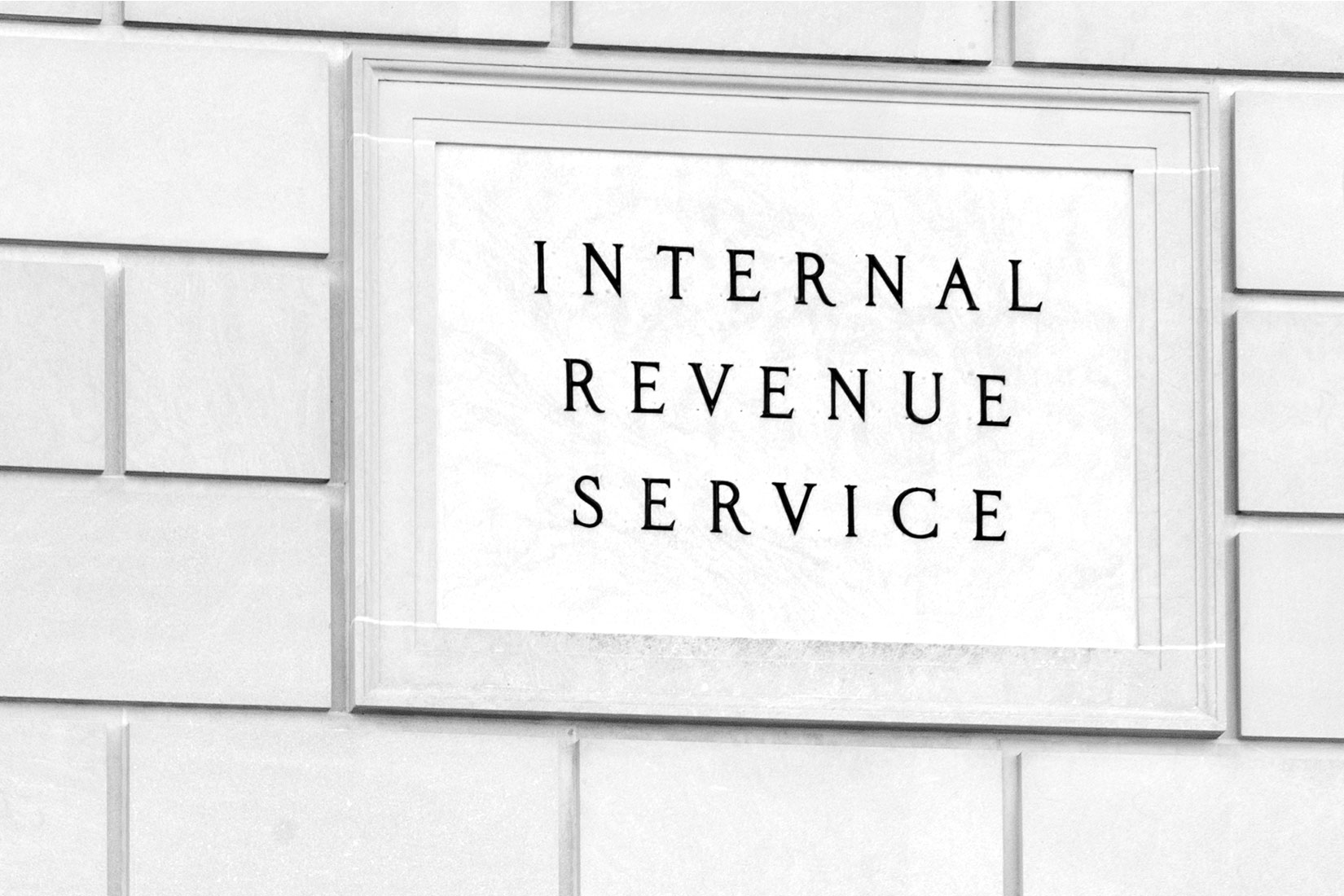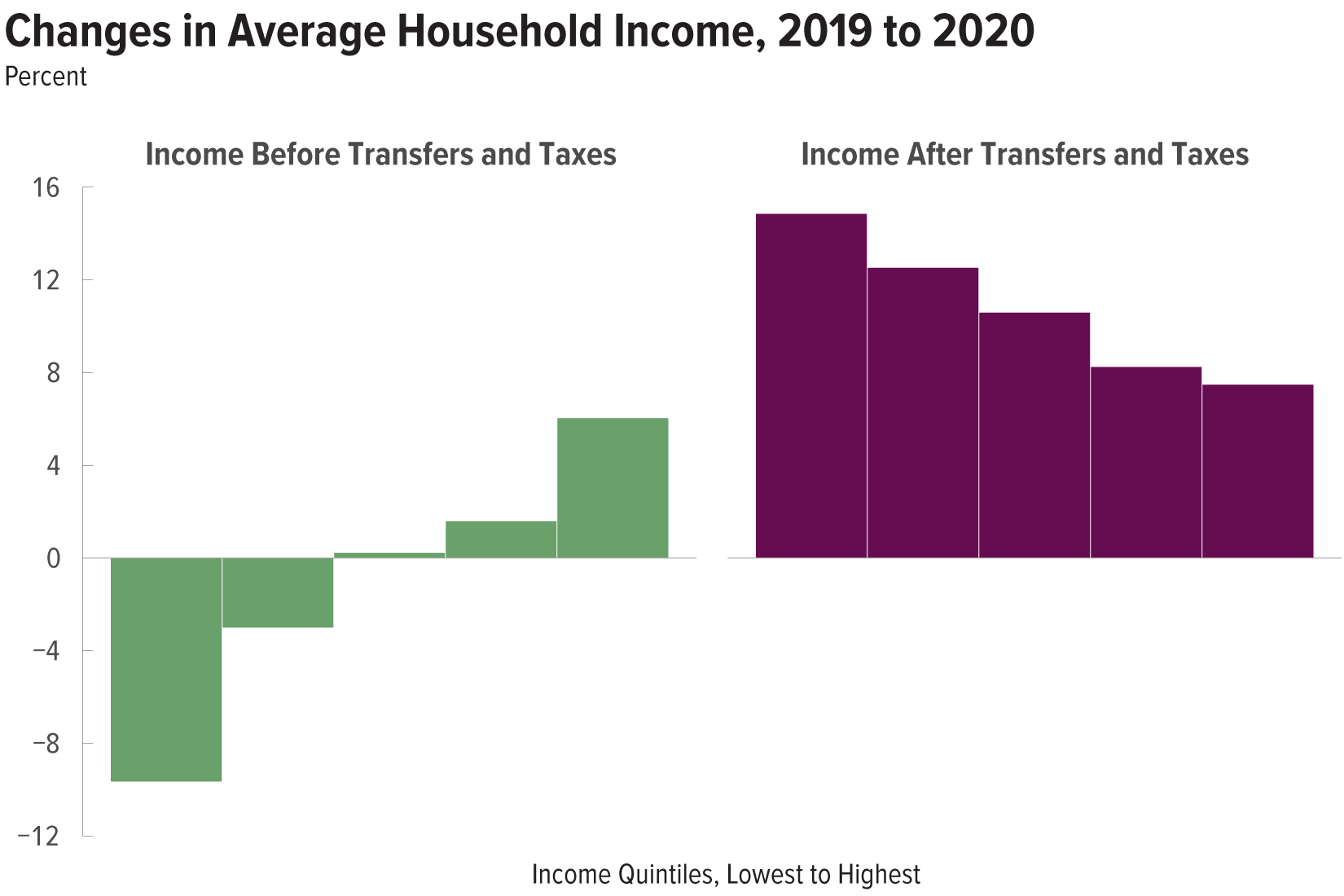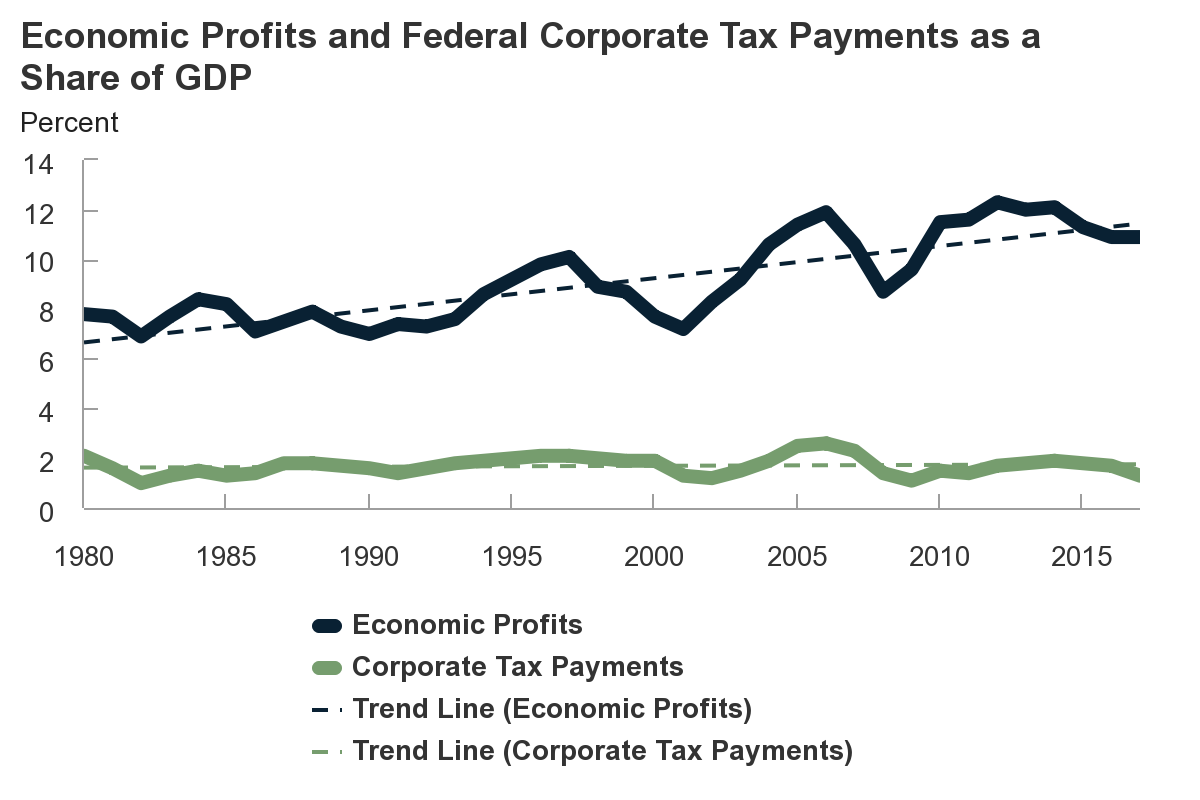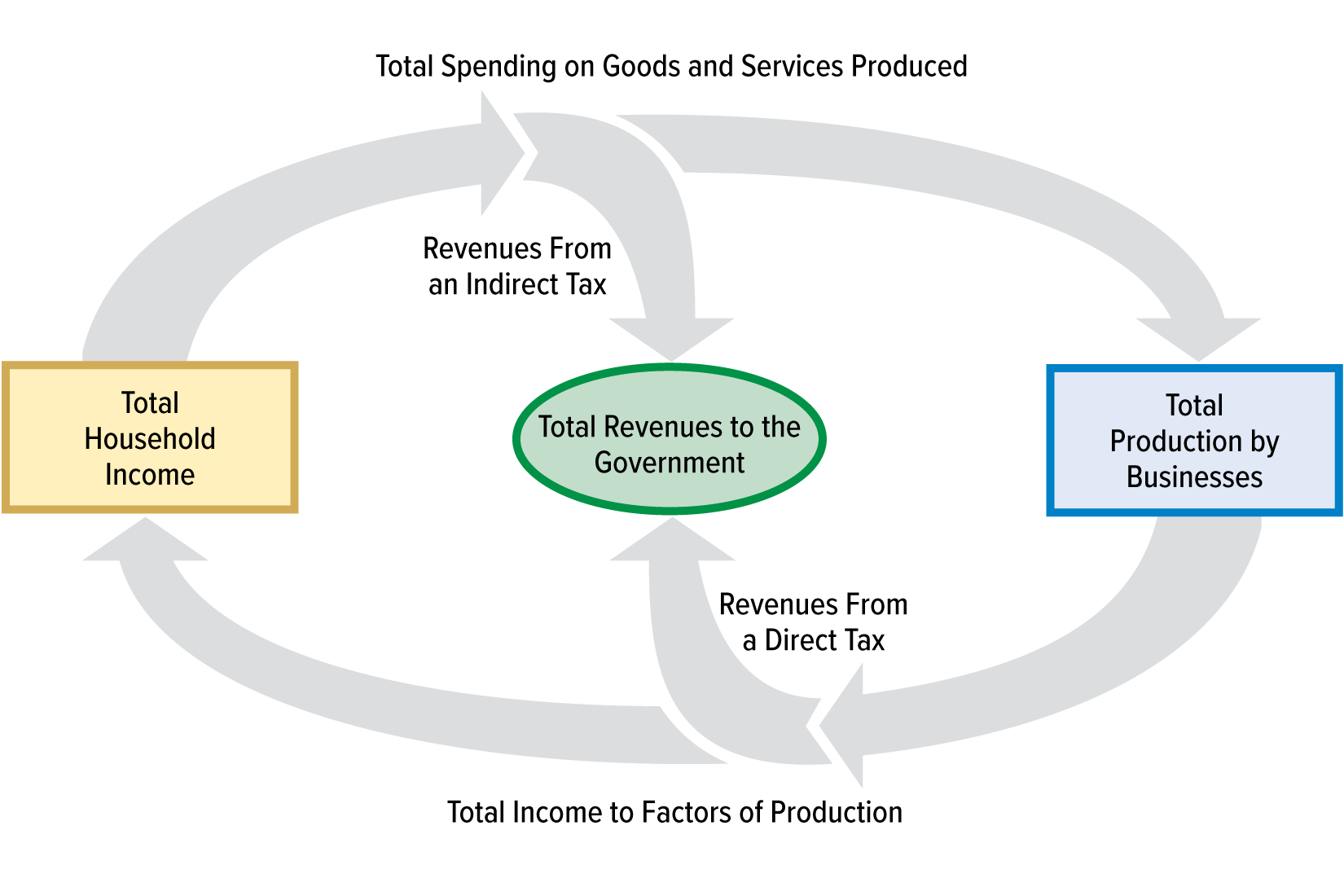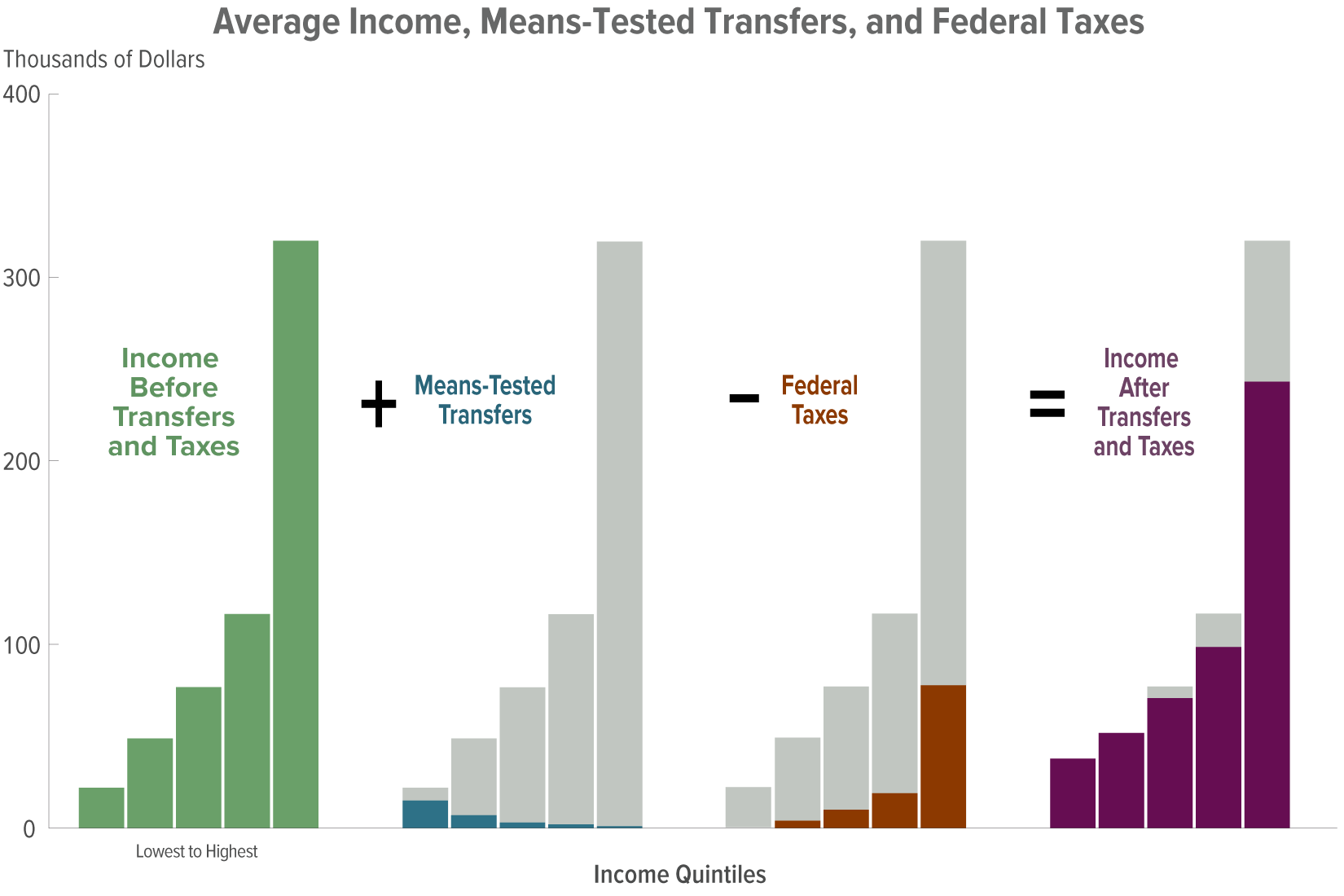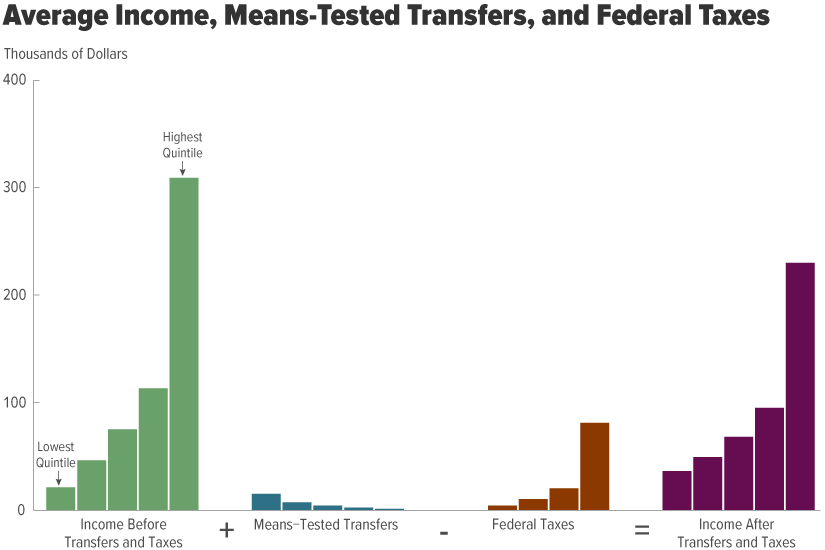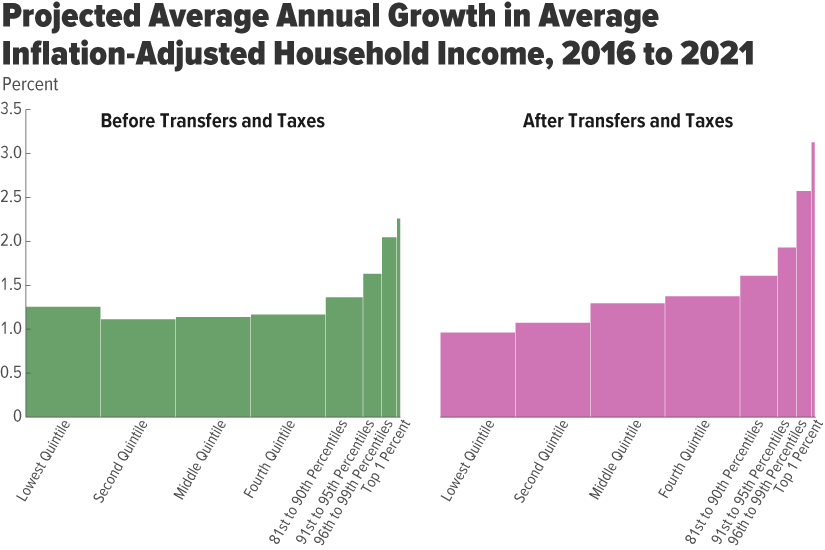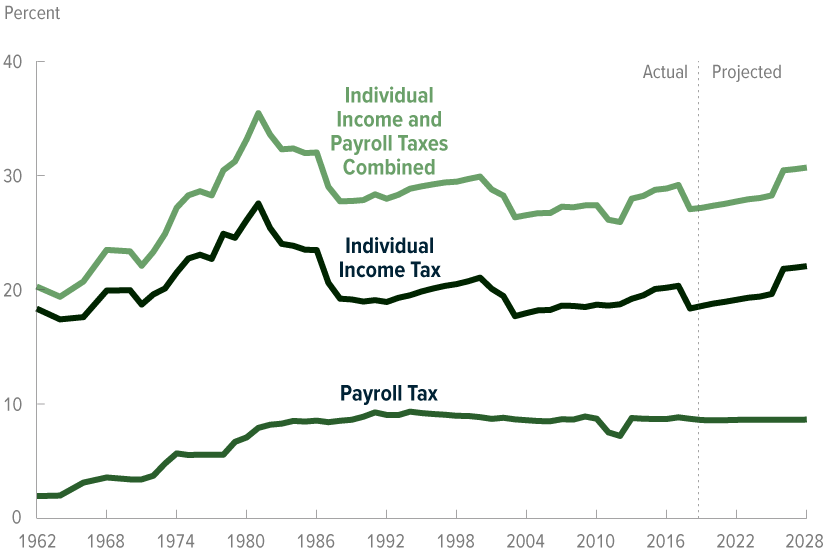CBO describes how funding for the IRS affects CBO’s revenue projections and how CBO estimates the revenue effects of rescissions of such funding. CBO also estimates the budgetary effects of rescinding varying amounts of the IRS’s funding.
Explaining Analytical Methods
- Report
In 2020, the coronavirus pandemic and the ensuing federal response had significant effects on the distribution of household income. Income inequality before transfers and taxes increased, but inequality after transfers and taxes decreased.
- Report
Over recent decades, corporate economic profits have grown faster than the amounts that corporations pay in federal taxes. CBO examined the factors that explain why corporate tax payments have not grown with corporate economic profits.
- Report
The Congressional Budget Act of 1974 requires CBO to prepare estimates of the cost of legislation at certain points in the legislative process. This document provides answers to questions about how CBO prepares those cost estimates.
- Report
The Congressional Budget Act of 1974 requires CBO to produce an annual report on federal spending, revenues, and deficits or surpluses. This document provides answers to questions about how CBO prepares those baseline budget projections.
- Report
CBO explains why it uses an income and payroll tax offset when estimating the budgetary effects of changes in indirect taxes, how the rate of the offset is set, and how it is applied in cost estimates and in baseline projections of revenues.
- Report
CBO examined how the benefits from major tax expenditures in the individual income tax and payroll tax systems were distributed among households in different income groups in 2019.
- Report
In 2018, average household income after accounting for means-tested transfers and federal taxes was $37,700 among households in the lowest quintile and $243,900 among households in the highest quintile.
- Report
CBO describes estate and gift taxes, the people who pay them, the types of assets that make up taxable estates, and the model the agency uses to project estate and gift tax revenues in its baseline.
- Report
In 2017, average household income before accounting for means-tested transfers and federal taxes was $21,300 for the lowest quintile and $309,400 for the highest quintile. After transfers and taxes, those averages were $35,900 and $229,700.
- Report
CBO examines the IRS’s enforcement activities between 2010 and 2018 and analyzes how the decline in those activities reflects the decline in its funding and staff over that period. CBO also estimates how changes to the IRS’s budget could affect federal revenues.
- Report
This report projects the distributions of household income, means-tested transfers, and federal taxes under current law in 2021 and compares them with the actual distributions in 2016.
- Report
In this report, CBO projects, on the basis of current law, marginal federal tax rates on labor income from 2018 through 2028. So that current trends can be understood in a historical context, the projections are accompanied by rates from 1962.


